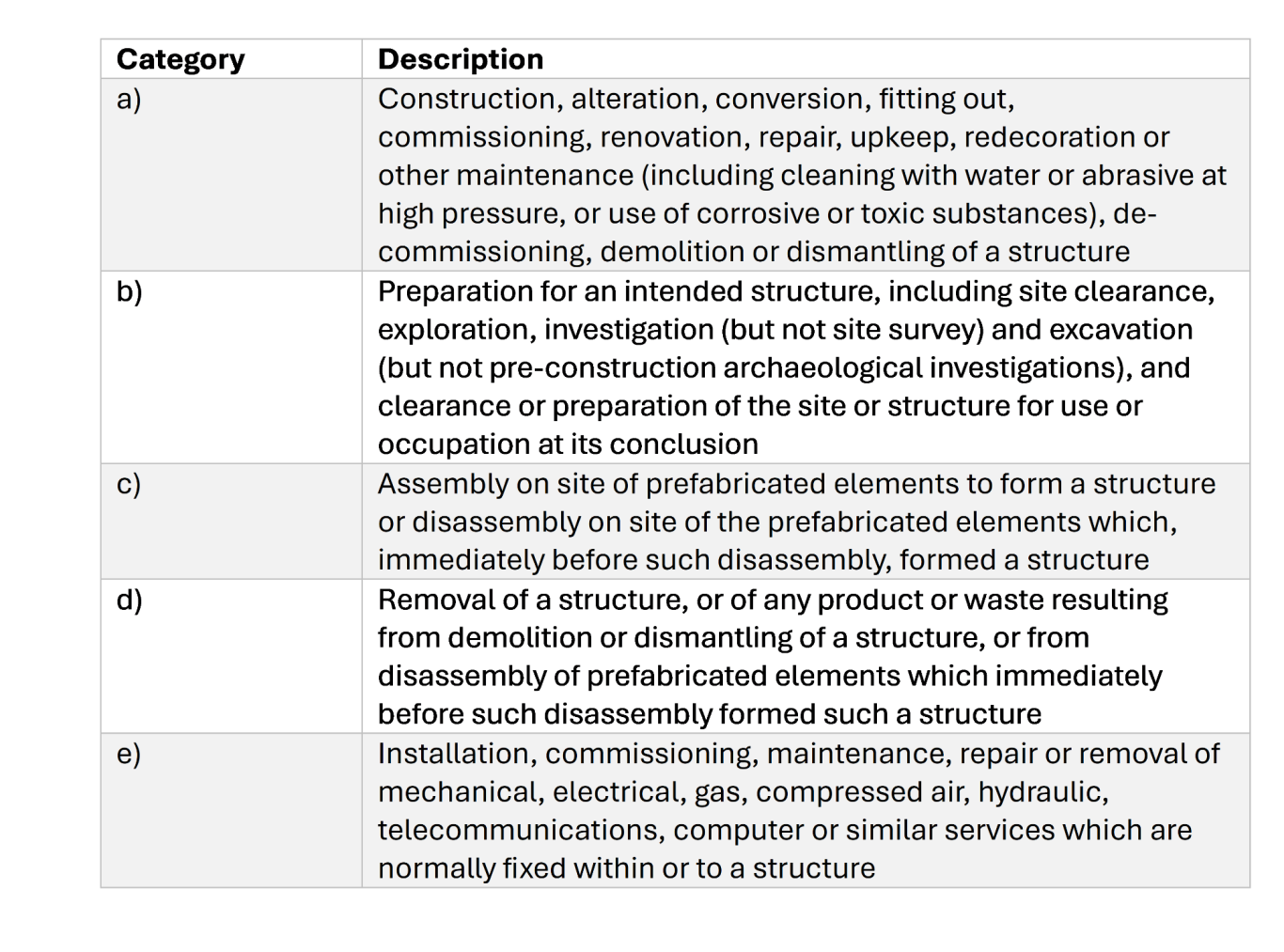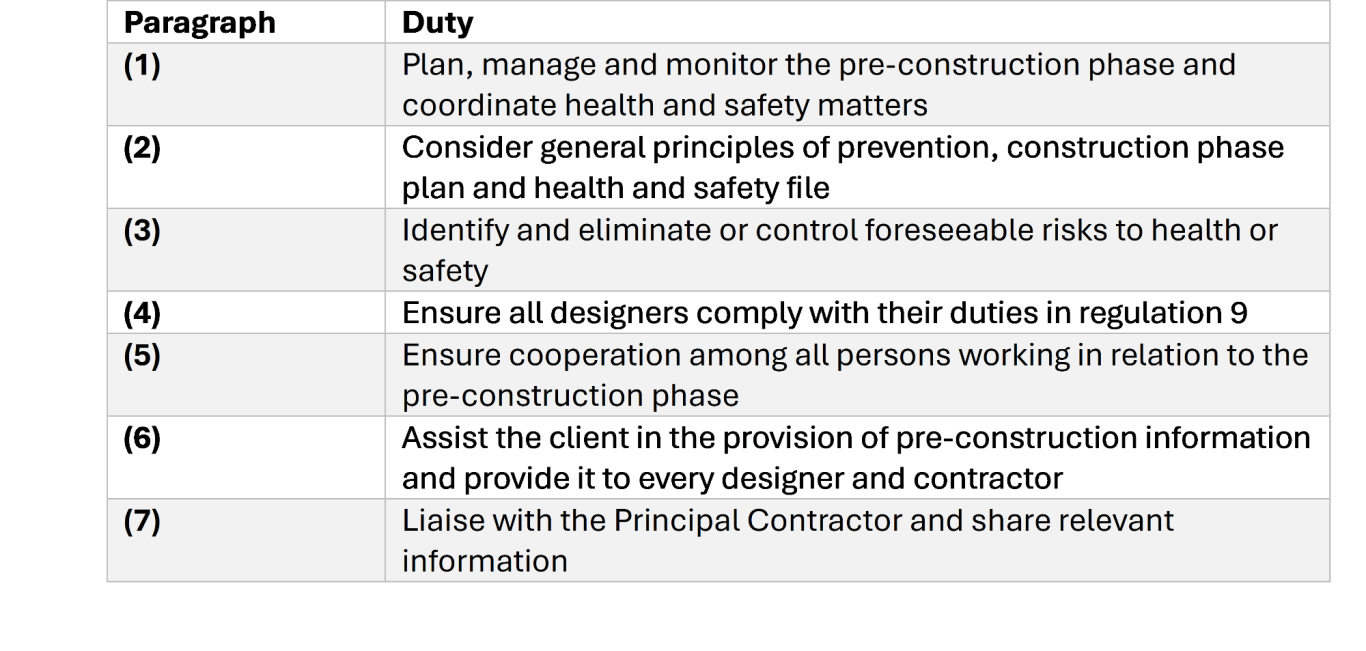Frequently Asked Questions
Navigating the complexities of regulations and guidance can be daunting, but it does not have to be. MoxonCole specialises in simplifying the process, ensuring clarity, compliance, and confidence every step of the way. We have compiled a list of questions to help give you insights into both the Building Regulations Principal Designer and CDM Principal Designer.
1. What is a Principal Designer?
The Principal Designer is a statutory dutyholder, originally only under the CDM regulations, but since the 2023 amendments there is also a Principal Designer dutyholder under the Building Regulations.
The two dutyholders have the same name, but the two roles are entirely different, and require entirely different qualifications, skills, knowledge, experience, and behaviours.
Where a construction project meets the trigger point for the appointment of a Principal Designer one must be appointed by the client in writing under both the CDM regulations and the Building Regulations.
For each appointment, the Principal Designer can be an individual or an organisation, and the same individual or organisation could provide both roles, if they can demonstrate they're competent to do so, or there could be a different Principal Designer appointed to each role.
2. Do all construction projects need a Principal Designer?
No - but almost all of them do.
The trigger for a construction project requiring a Principal Designer is the same under the CDM regulations as it is under the Building Regulations - when more than one contractor, or it is foreseeable that more than one contractor, will be working on a project.
This includes subcontractors, so almost every construction project will need a Principal Designer to be appointed in writing by the client for each of the two dutyholder roles.
If there are no works included in the project that need building control approval the Building Regulations Principal Designer is not required.
3. What is the difference between Principal Designer CDM and Building Regulations Principal Designer?
The CDM Principal Designer's key responsibility is to 'plan, manage and monitor the pre-construction phase and coordinate matters relating to health and safety during the pre-construction phase to ensure that, so far as is reasonably practicable, the project is carried out without risks to health or safety.'
The key responsibility of the Building Regulations Principal Designer is to 'plan, manage and monitor the design work during the design phase and coordinate matters relating to the design work comprised in the project so that all reasonable steps are taken to ensure that the design is such that if the building work to which the design relates were built in accordance with that design the building work would be in compliance with all relevant requirements.'
Fundamentally the CDM Principal Designer must understand the risks to health and safety inherent in the site and the design as it progresses and ensure that wherever it's practicable the Designers design out those risks.
The Building Regulations Principal Designer on the other hand must collaborate with the design team to plan a route to compliant design, ensure there is the necessary competence across the design team, and monitor the progress of the design to compliance.
4. Does the Building Regulations Principal Designer need to be an architect?
No. The legislation stipulates that the Principal Designer should have control over the design work, and that where the person is an individual, the skills, knowledge, experience and behaviours necessary, where the person is not an individual, the organisational capability to fulfil the duties of a Principal Designer.
MoxonCole meet the requirements of PAS 8671: 2022 which sets out the skills, knowledge, experience and behaviours needed to be competent to deliver the role, and we feel that as an 'extra pair of eyes', dedicated only to delivering the Principal Designer role, we can bring valuable perspective and scrutiny to the design process.
Engaging with and embedding ourselves into the design team allows us to deliver the role proactively, influencing the design work to achieve compliance efficiently from day one.
The Royal Institute of British Architects is encouraging architects to take on this role, however not all architectural practices want to do so, and often a project doesn't have an architect, for example maintenance driven projects.
5. What is PAS 8671:2022?
Publicly Available Specification (PAS) 8671 is specification that benchmarks Principal Designer competences and increases building safety. It outlines competence areas including behaviour, legislative knowledge and more.
There are thresholds of competence that individuals are expected to meet when delivering or managing dutyholder functions, and additional competencies for working on Higher Risk Buildings (HRB).
6. How can an individual or organisation demonstrate competence?
By achieving accreditation with professional bodies. The professional bodies must ensure that their assessment is in accordance with PAS 8671: 2022. The application process is evidence-based. The register is only for BRPD roles only, and not CDM Roles.
MoxonCole are in the process of achieving registration with Association for Project Safety and can provide Clients with their response to PAS 8671: 2022 to demonstrate their competence.
7. Do I need a Building Regulations Principal Designer for a domestic construction project?
Yes, if there is more than one contractor and/or subcontractor working on the project. If the client does not appoint a Principal Designer, the Designer in control of the design phase is the Principal Designer by default.
8. When should you appoint the Building Regulations Principal Designer?
As the role is important in the planning stages of a project the Principal Designer should ideally be appointed early in the design process, around the beginning of RIBA Stage 3.
The regulations state that the Building Regulations Principal Designer should be appointed before the start of the construction phase for projects not involving works to Higher Risk Buildings (HRB), and before the building control application is submitted on projects that do involve works to HRBs.
By appointing the Principal Designer at the legal backstop, though, the opportunity to proactively plan and drive compliance into the design will be missed, and any gaps in competence in the design team and potentially the design itself that come to light could result in delay and additional design costs.
9. What happens if you do not appoint a Building Regulations Principal Designer?
On domestic projects, the Designer in charge of the design information takes on the legal duties of the Principal Designer. On commercial projects the role becomes the responsibility of the Client.
Without a written appointment of a Principal Designer in place the role automatically defaults as above, which means that Designers and Clients are legally responsible for the Principal Designer's responsibilities without knowing it.
10. What is the Building Safety Act 2022 (BSA)?
This is an Act of Parliament set in law. The 2023 amendment to the Building Regulations was enabled by the Act and introduces new dutyholder roles and stricter processes around compliance with the Building Regulations. The Act has impact across all aspects of building safety, in particular the dutyholder responsibilities, competence requirements, and record keeping.
11. Why is the Building Safety Act important?
The amendments have strengthened enforcement powers meaning failure to meet these duties will result in prosecution, financial penalties and potential jail time for Individuals and organisations. They could also be blacklisted from engaging in future building projects.
12. Does the Building Safety Act 2022 apply in Scotland?
The Building Safety Act applies to England and Wales. Some provisions of the Act apply to Scotland however most of the issues covered are devolved matters.
13. What is CDM 2015?
Construction (Design and Management) Regulations 2015 (CDM 2015) cover the management of health, safety and welfare when carrying out construction projects.
14. When does CDM 2015 apply to a project?
CDM applies to a project when it is considered “construction work” under Regulation 2 a) to e):

15. When should the CDM Principal Designer be appointed?
The appointment by the Client must be made as soon as practicable, and in any event, before the construction phase begins.
16. Who needs to appoint the CDM PD?
The client must appoint in writing—
(a) a designer with control over the pre-construction phase as principal designer; and
(b) a contractor as Principal Contractor.
17. What happens if no CDM PD appointment is made?
If the client fails to appoint a Principal Designer, the client must fulfil the duties of the principal designer in Regulations 11 and 12.
If the client fails to appoint a principal contractor, the client must fulfil the duties of the principal contractor in Regulations 12 to 14.
18. What is the key role of the CDM PD in the design stage of a construction project?
We have paraphrased Regulation 11 which states:

19. What are the Client’s responsibilities under CDM?
The client must make suitable arrangements for managing a project. Most clients, particularly those who only occasionally commission construction work, will not be experts in the construction process. For this reason, they are not required to take an active role in managing the work. However, the client is required to make suitable arrangements for managing the project so that health, safety and welfare is secured.
This includes:
- Assemble the project team.
- Appoint the Principal Designer and Principal Contractor.
- Maintain and review management arrangements regularly - MoxonCole conducts CDM audits during construction.
- Provide pre-construction information - MoxonCole assists by providing an overarching PCI document.
- Prepare a construction phase plan (CPP) before starting construction - MoxonCole ensures it is suitably developed.
- Ensure the Principal Designer prepares a health and safety file.
- Submit an F10 notification to Health and Safety Executive (HSE) for projects that:
- Last longer than 30 working days with more than 20 workers simultaneously, or
- Exceed 500 person-days - MoxonCole submits the F10 on behalf of the client.
20. What happens if you fail to comply with CDM?
The construction project could be halted, and enforcement action could be taken by the HSE, including fines, prosecution and even imprisonment.
21. What happens if there is more than one client on a project?
CDM 2015 defines a client as anyone for whom a construction project is carried out (see Regulation 2(1)). In any project there may be more than one client Regulation 4(8) can be used but all must agree that only one of them should be responsible for carrying out the requirements of CDM 2015.
In some circumstances, it may not be clear who the client or clients are. Any uncertainty should be resolved as early as possible by considering who:
(a) ultimately decides what is to be constructed, where, when and by whom;
(b) commissions the design and construction work (the employer in contract terminology);
(c) initiates the work;
(d) is at the head of the procurement chain; and
(e) appoints contractors (including the principal contractor) and designers (including the principal designer).
If there is still doubt about who the client or clients are, all the possible clients should agree that one or more of them is treated as the client for the purposes of CDM 2015. It is in the interests of all parties involved to identify and agree who the client or clients are. Otherwise, they may all be considered to have client duties under CDM 2015.
If you have any more queries, or wish to discuss your project get in touch!
Here are some useful links, for your convenience.
Contact us now for trusted advice you can count on
To arrange a free discovery call to discuss your project, complete the contact form and we will be in touch.
You can also follow MoxonCole on LinkedIn for project and industry updates.
We need your consent to load the translations
We use a third-party service to translate the website content that may collect data about your activity. Please review the details in the privacy policy and accept the service to view the translations.

